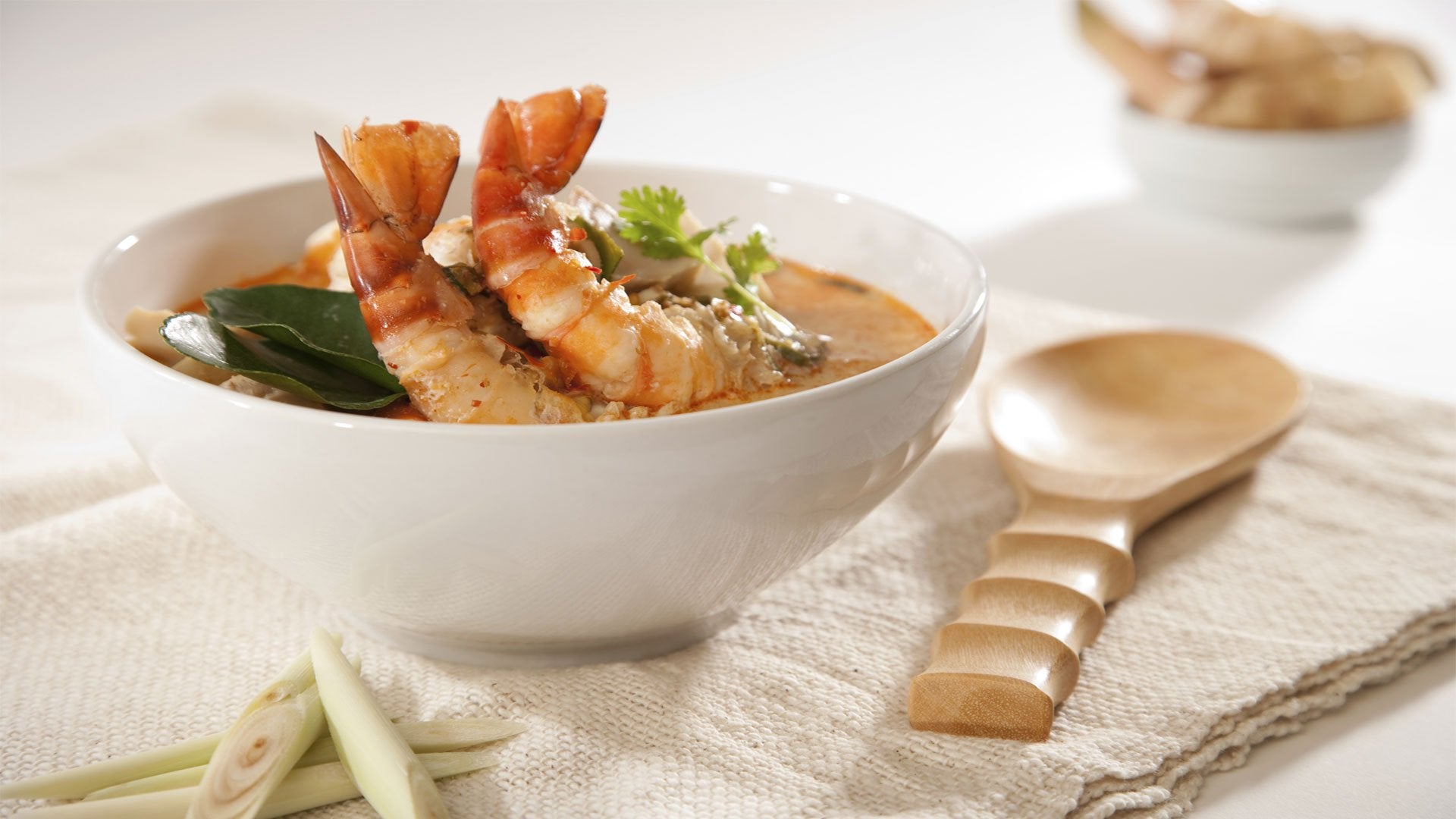« previous page of this article
When the food arrives, each dinner guest will receive an individual plate of rice, which forms the base upon which she may construct a meal according to taste from the dishes that have been ordered. Each will choose whatever she fancies from the shared dishes and add it to her plate of rice. While eating the meal, soup may be enjoyed as an accompaniment and does not have to be taken as a separate course. This sometimes surprises first-time diners.
Thai food is usually eaten with a fork and spoon; something which greatly reassures those who might have expected to have to master the unfamiliar technique of chopsticks. Chopsticks are actually used rarely, generally only for eating some noodle dishes. As all elements of a Thai meal are usually served in nice, bite-sized pieces, it is easy to eat one’s dinner with dignity.
In some part of Thailand, as in many parts of the world, it is common to eat food directly with the right hand instead of using cutlery. Practicality, and the sometimes rather rigid British sense of propriety make this an uncommon technique to use in restaurants, and it probably goes without saying that the spoon and fork option will be seen as preferable by all present!
Amongst the fare, one might find various snacks and side dishes such as rice cakes, satay (a kebab-like meat snack, skewered with bamboo and often served with a peanut sauce) and spring rolls. General dishes might include omelettes and stir fried or sweet and sour dishes. Soups, curries and various dips are all likely to make an appearance, as is a salad. The Thai salad is, however, often a little different from its conventional British counterpart in the use of sweet, sour and salty flavours along with the spiciness of chillies.
Like many Asian cuisines, Thai restaurant cookery has made the occasional adaptation to take advantage of ingredients local to the country in which it operates. Broccoli, for example, is used in many British Thai restaurants, but it is rarely used in Thailand itself.
It is beyond the scope of this article to describe in detail the flavours of individual Thai dishes. Suffice it to say that there is something to suit every palate. Thai cuisine specialises in balancing spicy, sweet, sour, salt and bitter flavours, and as fresh herbs generally take precedence over strong spices, those flavours are perhaps less daunting than those in some of the fierce curries to be found in Indian food. That is not to say that Thai curries lack fire, but the spice-heat is perhaps more fleeting than that from Indian foods, and thus the palate is more quickly free to enjoy the flavours of other dishes. The meal is usually rounded off with a welcome sweet or fruit desert to contrast with the spices and herbs of the main meal.
A Thai meal is a visual experience as well as an olfactory one. The presentation of many dishes is colourful and rich in varied textures. The attractiveness of the food, the richness of the flavours and the emphasis in communal enjoyment of the meal make Thai dining an experience that should not be missed.









Leave a comment